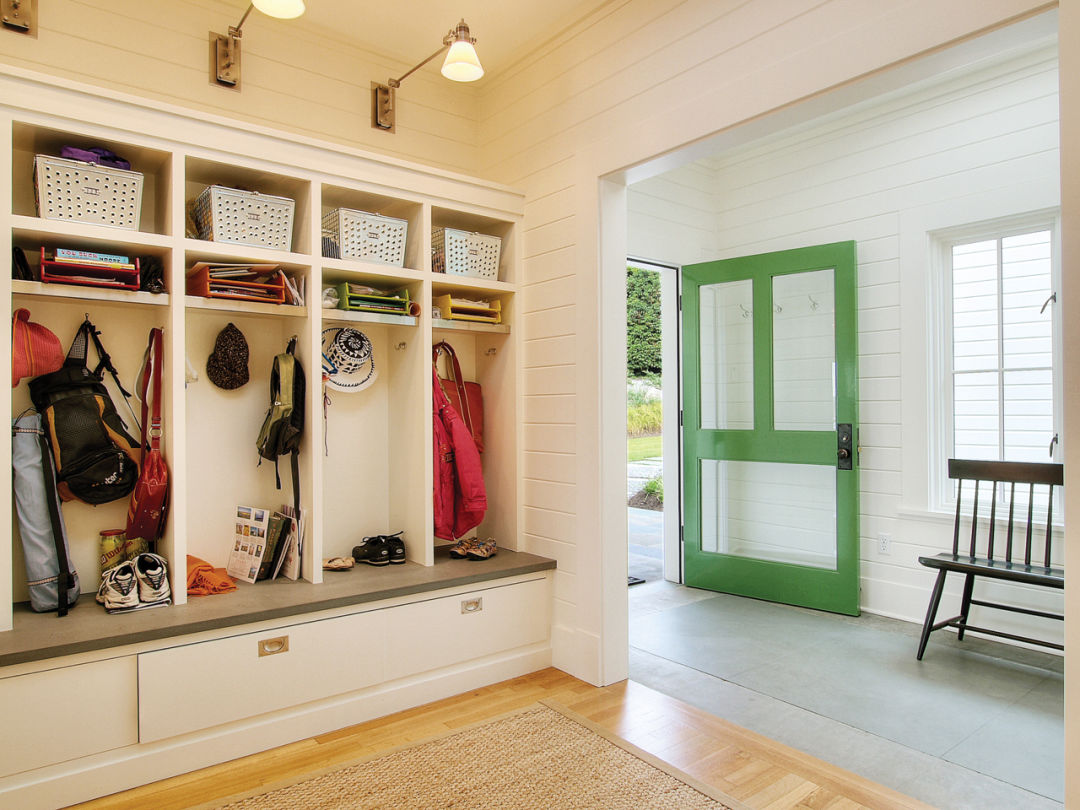How to Create an Entryway


The Experts: Kim Clements, co-owner and creative director, JAS Design Build; Sara Eizen, interior designer.
Image: Courtesy Della Chen
Coats. Backpacks. The magical disappearing dog leash. All of these need a functional home, especially in the winter months when clothing multiplies and shoes get muddier. No, a pile of boots by the front door doesn’t count as functional. And neither does a coat tree overgrown with a year’s worth of seasonal layers. Two local designers help marshal the important junk that makes up daily life.
Accept Some Mess
Clements once suggested a family put doors or a drape over their cubbies, but they didn’t want to erase the signs of their busy home. “People shouldn’t be afraid of their own philosophies or of managing their own stuff,” she says. An impeccably quaint mudroom that doesn’t serve the needs of a home only works on Pinterest.
A Room in Name Only
Don’t get caught up in creating one central entry space. Instead, “Ask yourself how you come and go,” says Clements, and create multiple “drop zones.” Usually enter through the garage downstairs? Stash the jackets and boots there, then bring the items you engage with—like bags and purses—to an upstairs cabinet.
Create a Life Pantry
“A mudroom isn’t just about mud,” says Clements. It should contain the ebb and flow of daily life. Don’t forget the little things: a personal lost and found or a designated space for phone chargers and power cords.
Hook It Up
Eizen warns against the coat tree: “No matter what, it always looks cluttered.” Go with hooks instead—as decorative or minimal as the room calls for—staggered vertically at six feet and three feet. The lower ones are great for bags and scarves, and they eliminate any excuse children might have for throwing their jackets onto the back of a chair.
Out of Sight
Not every layer you own belongs out in the open, especially in homes with living room entryways. Same goes for shoes, says Eizen. Shoe racks might save space in smaller floor plans. “But then you’re enjoying a glass of wine while looking at shoes.” Invest in a 12-inch-deep shoe cabinet instead, like the Ikea Hemnes.




